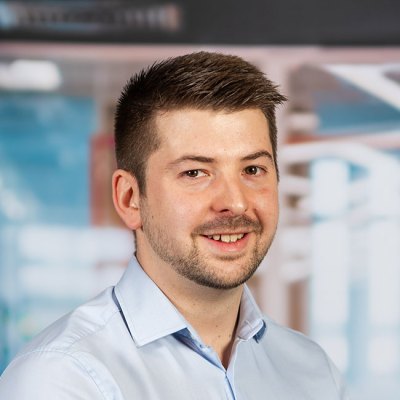A study recently proved that the human eye is sensitive enough to distinguish a single photon. Yet for the most part, the human brain ignores the smallest possible units of light, filtering them out as unnecessary noise. There are times, however, when noticing and analysing single photons is important. Crucial, even. Over the past two years we’ve been working with Cambridge University to create instrumentation that is able to do just that.
The university’s latest study by the NanoPhotonics Centre, based within the Cavendish Laboratory, needed breakthrough instrumentation that could not only spot photons but also track, time and analyse them. The study was led by Professor Jeremy Baumberg, a world authority in the study of how nanomaterials interact with light, especially ones that can be fabricated on a large scale and have a practical use. His team’s latest research has just been published in the journal Optica and demonstrates how to probe mechanisms and effects occurring at the nanoscale in new materials.
Together, Cambridge University and our team here at CC have released the design under an open-source licence, to support future research in similar fields. The challenge when trying to examine nanostructures is that they are often destroyed when you probe, characterise or measure them. The laser beams required to do so are simply too powerful and destructive at this tiny level of detail. CC’s role in this project was to meet this challenge, efficiently and cost effectively.
Our aim was to reduce the necessary amount of laser light down to individual photons so that Professor Baumberg and his team could conduct the experiments, precisely tracking each photon’s progress on the picosecond timescale to draw conclusions. This called for a molecule probe with a very low power in the stream of photons.
Detection with SPADs significantly improves SNR
The aim was to extract signals at low single photon count rates from large backgrounds – a major challenge in many optical experiments and technologies. Together, we developed a single photon lock-in detection scheme based on continuous photon time stamping. The aim was to improve the signal-to-noise ratio by more than two orders of magnitude.
Our device employed a single photon avalanche diode (SPAD) which detected photons and created an electrical signal. We then developed a time tagger using a field-programmable gate array (FPGA). FPGAs are able to implement high speed digital circuits that convert and record the times of the electrical signals from each photon.
They are more financially viable for experimental work than the more traditionally used application specific integrated circuit chips (ASICs) which perform the same role but are far more costly because of their expensive fabrication.
Professor Baumberg was kind enough to say: “Our collaboration with Cambridge Consultants was invaluable for taking these ideas and realising them in low-cost hardware and software, to open up new experiments and techniques. They were constantly responsive to our ideas and comments, giving an ideal partnership.”
My colleagues and I have certainly learned a great deal through the collaboration with Cambridge University. As developers of breakthrough products and services, we’re excited about the wider possibilities of applying FPGAs and SPADs in similar ways for commercial applications. We look forward to working with clients in the advanced optical sensing space on low-cost but powerful solutions using this technology.
Game-changing sensitivity improvements
In the medtech field we anticipate using these solutions both in vivo and in vitro, creating useful and practical technology advances. On the in vitro side, being able to work with low-level light and high degrees of accuracy could be a gamechanger for taking measurements in assays. For example, when examining the temporal behaviour of fluorescent labels, the ability to detect individual photons will greatly enhance the accurate tracking of changes in fluorescence. By the same token, throughput of measurements could also become far swifter and more efficient.
This technology could also have an impact on medtech devices designed to work in vivo. The team here is considering the ways in which shining lasers on human tissue could be improved using this instrumentation. The diffuse character of living tissue means that taking a clear image through skin is often difficult, due to the scattering effect on the light.
But with the capacity to monitor individual photons, the image could discriminate far more strongly. Imaging could be undertaken endoscopically from within the body or externally through the skin. This could open up many possibilities for non-invasive surgical guidance during operations and procedures, for example.
Beyond the world of medical technology, there is also a wealth of potential in industrialised commercial applications. Just think of the myriad of applications such as LiDAR (light detection imaging and ranging), in cars that could be improved by much greater sensitivity. The possibilities are very exciting.
All in all, we’re enthusiastic about the technical advances that could be unlocked by pushing the limits of optical sensing in this way. Perhaps you’re interested in working with us on projects involving advanced optical instrumentation? Please get in touch, it’ll be great to hear from you.





